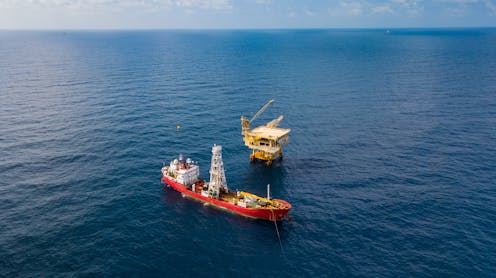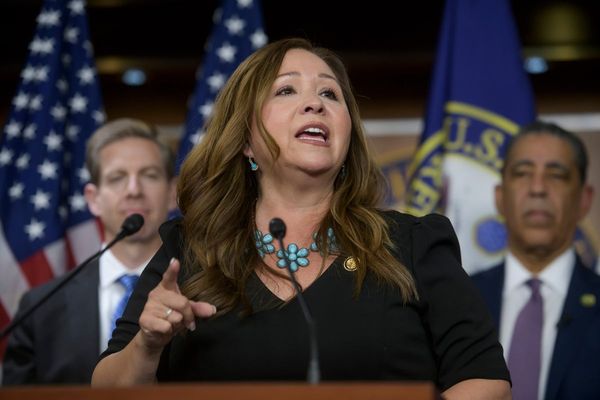
The international legal order is floundering. The geopolitical and resource policy priorities of the United States are shifting.
These changes now implicate the international framework for governing the seabed: on April 24, U.S. President Donald Trump signed an executive order that moves toward allowing deep-sea mining by the Americans.
Driven by a critical minerals expansionary agenda, the U.S. is considering measures to fast-track approvals for corporations to mine the international seabed.
What is the difference — for marine environments — between excavation under an international legal framework or U.S. domestic law? Both systems permit state and private organizations to mine vulnerable marine ecosystems: does an international framework offer stronger environmental protections than U.S. law?
A ‘constitution’ for the ocean
Under the United Nations’ watch, ocean conditions have declined.
The international seabed zone encompasses 54 per cent of the planet’s surface. The designation was created in 1994 under the UN Convention on the Law of the Sea (UNCLOS). When described as the “constitution for the oceans,” UNCLOS deceivingly implies that its role is protective. However, the treaty functions as architecture for exploiting ocean resources.
It does this by dividing the ocean into zones that control how and where nations and corporations can exploit the seas. As well, it supports the idea of the ocean as a vast, exploitable resource. Weak environmental protections are offered in return. UNCLOS speaks little of either the ocean itself or of diverse human-ocean relationships.
It is a constitution for the ocean, without the ocean.
Regulating mining
UNCLOS established the International Seabed Authority (ISA) to manage the international seabed as the “common heritage of humankind.” Since it was established 30 years ago, the ISA has prioritized the development of a regulatory framework for commercial mining. But the ISA’s stewardship of the deep seabed as humankind’s common heritage involves more than the advancement of commercial mining.
Given the multiple ocean crises intensifying under the impacts of climate change, it is bewildering that the ISA could still be pursuing such a destructive regime.
Under UNCLOS, the ISA has legal responsibilities to protect the marine environment. Yet it doesn’t have a comprehensive environmental policy, environmental management plan or dedicated scientific division. This is despite the central role marine science plays in understanding and protecting the ocean. Instead, the ISA appears to be patching together environmental regulations on the fly.
Extractive interests
The scientific data that the ISA relies on comes from the very companies seeking to mine the seabed. Commercial miners conduct their own environmental assessments and benchmarks, and as such, the ISA’s governance approach appears to be one of companies self-regulating.
Despite the “ocean emergency” and scientific concerns about marine ecological risks, the ISA maintains an extractivist path.
It is now finalizing regulations to allow commercial mining in the Clarion–Clipperton zone of the North Pacific Ocean. If all exploration licences currently issued in this zone are converted to exploitation licenses, this will be the largest mining operation the planet has ever experienced.
The ISA’s 170 members, including the U.S., have upheld a consensus-based governance approach. In doing so, they’ve prevented any unilateral claims to the international seabed. Although the U.S. never ratified UNCLOS, it too has largely observed the consensus-based legal order. Until now.
The Metals Company (TMC), a Canadian deep-sea mining company, recently announced its intention to bypass the ISA and work with the Trump administration to pursue seabed mining in international waters. To do so, it will rely on the Deep Seabed Hard Mineral Resources Act (DSHMRA), administered by the National Oceanic and Atmospheric Association (NOAA). Congress had previously noted that this domestic law was always considered a temporary measure until the development of an acceptable system under UNCLOS.
In principle, NOAA’s deep ocean scientific expertise enables it to competently oversee U.S. seabed mining. This includes assessing the potential environmental impacts of mining and ensuring the protection of the marine environment. It has already developed DSHMRA mining regulations within a “precautionary and adaptive management framework.”
Before granting a mining licence, NOAA is required to prepare and publish an environmental impact statement. However, recent staff cuts and the new administration’s rollback of marine environmental protections potentially compromise its oversight capacity.
How NOAA’s scientific teams feel about fast-tracking a “gold rush” is another story.
The ISA has denounced its snubbing by The Metals Company. However, by shopping around for a jurisdiction of convenience, TMC has inadvertently shone a spotlight on gaps in the ISA’s environmental governance approach.
Future marine research
In the meantime, momentum for a ban or moratorium is growing.
Without a foundational science policy or in-house scientific expertise, the ISA is ill-equipped to safeguard the deep ocean. Marine science offers a way to better understand the deep ocean and its vulnerabilities and can help re-imagine the ISA’s direction toward a more generative role as an environmental steward.
Through marine social sciences, ocean humanities and Indigenous knowledge, other pathways can be explored toward a better understanding of human-ocean relationships. The ISA has the potential to step up to its planetary stewardship role by developing policy guidelines to guide such transitions. The oceanographic background of the ISA’s new secretary-General, Leticia Carvalho, bodes well. Perhaps this may happen through a renewed focus on marine science — time will tell.
Susan Reid does not work for, consult, own shares in or receive funding from any company or organisation that would benefit from this article, and has disclosed no relevant affiliations beyond their academic appointment.
This article was originally published on The Conversation. Read the original article.







